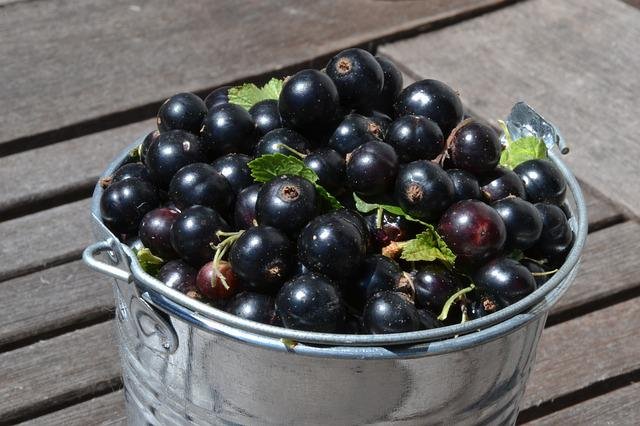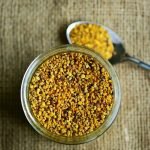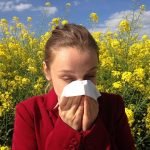
Natural antihistamines are a valuable resource for dealing with seasonal allergies. Here are 10 best remedies with natural antihistamine effect.
Natural antihistamines are an effective weapon you can use to deal with unpleasant seasonal allergies and many of the related symptoms. In general, the term allergy defines the abnormal reaction, carried out by the immune system, in the presence of substances defined as allergens.
These substances (eg: pollen, dust, pet hair), which are harmless for most individuals, are instead capable of causing hypersensitivity reactions varying in intensity and type of symptoms in predisposed subjects (congestion nose, sneezing, red eyes, watery eyes, rash, itching, etc.).
At the base of the typical symptoms of allergy there is the release, by particular immune cells, of pro-inflammatory mediators. Among the substances in question is histamine.
Antihistamines work by limiting the release of histamine and, therefore, leading to the alleviation of symptoms. Natural antihistamines, if used correctly, can therefore be effective in treating allergies and free from side effects, such as drowsiness. Subsequently, the main phytotherapeutic remedies recognized as antihistamines or, more generally, as natural antiallergics, will be described point by point.
Natural antihistamines: what they are and how they work in the body
The natural resources that humans can use to preserve their well-being seem to offer numerous remedies for allergies, even seasonal ones. For some time now, experts have been taking a profitable interest in this area, investigating the antiallergic properties of plants. In this regard, some phytotherapeutic species seem to be fully included among natural antihistamines, lending themselves to the preparation of commercial products specifically designed to combat allergies without, however, causing unpleasant side effects typical of the most common drugs (eg drowsiness). For the purpose of an effective synergistic effect, each product is often formulated starting from several active ingredients, making the possibilities of choice wider.
Below we will see the description of the best natural antihistamines to date best known and used, it being understood that, for a conscious and risk-free use, it is always advisable to seek medical advice. In this regard, particular caution must be exercised during certain physiological conditions, such as pregnancy or / and breastfeeding, as well as in the case of overt pathologies. It is also important to report to the doctor any pharmacological therapies in place, in order not to incur potentially harmful chemical interactions.
1. Black currant (Ribes nigrum)
The main remedies for allergies include black currant (Ribes nigrum), a shrub plant belonging to the Grossulariaceae family. The different constituents of the plant, in particular the leaves and berries, contain flavonoids, mineral salts and vitamins; relative to the latter, black currant contains some B vitamins and an excellent amount of vitamin C. Blackcurrant seeds, on the other hand, are rich in polyunsaturated fatty acids. The richness in biologically active substances is responsible for the medicinal use of black currant, which is generally used as a tonic, antioxidant and analgesic. The presence, in the berries, of substances known as “anthocyanins” attributes to the black currant a beneficial effect on the vascular system.
As regards its effect as a natural antiallergic, black currant, and in particular its bud extract, acts in a similar way to cortisone ( cortison-like action ), and can be used for the treatment of allergic rhinitis and asthma. Blackcurrant is commercially available in the form of mother tincture, bud extract and tablet supplements. It is probably one of the best natural antihistamines.
2. Chamomile (Matricaria chamomilla)
Undoubtedly among the best known and versatile phytotherapeutic remedies, chamomile (Matricaria chamomilla) is a herbaceous plant belonging to the Asteraceae family. Studies on the chemical composition of chamomile extracts have revealed the presence of various biologically active substances, such as the flavonoids quercetin and apigenin.
By virtue of its characteristics, several studies attribute various healing properties to chamomile, among which the calming, antimicrobial and anti-inflammatory activities stand out. Furthermore, some experimental studies carried out on chamomile extracts classify the latter as a good natural antihistamine, as it is capable of inhibiting the release of histamine by immune cells.
For healing purposes, chamomile can be used for making herbal teas and infusions, as well as for the preparation of compresses to be applied on the eyes affected by the relative symptoms, or on the areas of the body affected by hives. In addition, it is possible to use special structured products in capsules or tablets.
Finally, chamomile essential oils are commercially available, to be used appropriately. Like compresses, chamomile essential oils are also suitable for treating urticaria symptoms (itching, itching) by applying them externally.
3. Camellia sinensis and green tea
Now widespread in various cultures, green tea is obtained from the leaves of Camellia sinensis, a shrub species belonging to the Theaceae family. Thanks to the numerous medicinal properties associated with it, green tea is definitely known in the world of phytotherapy, boasting antioxidant, antimicrobial and immunomodulating activities.
These properties derive from the different bioactive components present in the plant and, among these, the polyphenols and saponins are worthy of note, whose activity also seems to manifest itself in an anti -allergic and antihistamine sense. Undoubtedly relevant for its antihistamine action, quercetin represents a further biologically active substance found in Camellia.
Although the most common way to benefit from the properties of Camellia is the use of the relative infusion filters, various supplement products are also easily available, with a definitely more pronounced effect than the infusion.
4. Rooibos and African red tea
Coming from the African territory, rooibos (Aspalathus linearis) is better known as “African red tea”, and is appreciated by regular consumers of infusions and herbal teas. Rooibos is a plant rich in polyphenols and flavonoids, or substances with a marked antioxidant activity. Furthermore, several studies attribute multiple pharmacological properties to rooibos, including hepatoprotective, antitumor and antiviral activities.
In ancient folk medicine, African red tea is known as a natural antiallergic, prompting the scientific world to investigate its effectiveness further. In this regard, it seems that the curative potential of this phytotherapeutic expedient can have a positive impact on some mechanisms underlying seasonal allergies, attenuating the symptoms.
On a commercial level, rooibos lends itself to various preparations for herbal teas, often enriched with aromatic additions of different types, such as orange, cinnamon and vanilla flavors.
5. Plantain (Plantago major)
Probably little known compared to other herbal remedies, the greater plantain is a herbaceous plant belonging to the Plantaginaceae family. Although its name may be unfamiliar, the plantain is appreciated and used in herbal medicine for some associated benefits.
Thanks to the numerous bioactive components contained in its leaves, such as flavonoids and terpenoids, but also vitamins and fatty acids, the plantain boasts anti-inflammatory, antimicrobial and expectorant properties. In addition, some laboratory experiments suggest that this botanical species may act as an effective antihistamine, placing it among the most interesting remedies for the treatment of allergies.
The dried leaves of plantain are excellent for the preparation of herbal teas and decoctions. Similarly, the leaf extracts are used for the preparation of capsule products that can be purchased in pharmacies and herbalists.
6. Perilla (Perilla frutescens)
Also little known in the Western world except among phytotherapy experts, Perilla frutescens is a herbaceous plant deriving from the Lamiaceae family. Widely cultivated in large areas of the East, this aromatic species is part of the ancient remedies of traditional Chinese medicine.
The healing properties attributed to Perilla are in fact numerous, ranging from antimicrobial to anti-inflammatory and modulating effects on the immune system. The composition of bioactive substances of Perilla leaf extracts also seems to be effective in an anti-allergic sense, placing this plant among the natural antihistamine remedies. Studies on the chemical composition of Perilla extracts have revealed the presence of flavonoids and polyphenols, as well as essential fatty acids of the Omega-6 series.
Perilla extracts are used to create ad hoc products that can be purchased from authorized retailers. In particular, it is possible to benefit from the anti-allergic effects of Perilla by resorting to food supplements in tablets or drops. Perilla oil also boasts similar properties and can be considered a valuable natural antihistamine.
7. Wild rose (Rosa canina)
Easily found in our country, wild rose (Rosa canina) is known in phytotherapy for its antioxidant, immunostimulating properties, and for its generic anti-allergic action. The richness of vitamin C, quercetin and hesperidin, or substances capable of counteracting oxidative stress, make the wild rose an interesting species in the medicinal field.
Some experimental observations suggest that the immunomodulating properties of wild rose can act positively in the treatment of some allergy symptoms. In particular, it seems that the active ingredients contained in wild rose may confer benefit in case of respiratory symptoms (cough, asthma).
As for the use of dog rose for healing and, in particular, anti-allergic purposes, it is possible to resort to the relative preparations for herbal teas, or to the numerous food supplements made from plant extracts.
8. Nettle (Urtica dioica)
Among the herbaceous species known in the field of traditional medicine there is also the nettle (Urtica dioica), whose therapeutic potential has been applied, for some time now, to various pathological conditions. Some bioactive components that can be obtained from nettle leaf extracts (flavonoids, tannins, sterols) seem to exert diuretic, anti-inflammatory and antihypertensive actions.
Some studies also suggest that nettle leaf extracts can work as a remedy for seasonal allergies, specifically by acting on the cells of the immune system and the related release of histamine. It is possible to benefit from the antiallergic effects of nettle by using herbal teas, infusions and supplements in capsules that are readily available at the appropriate points of sale.
9. Licorice (Glycyrrhiza glabra)
Known in taxonomy as Glycyrrhiza glabra, licorice is a herbaceous plant belonging to the Fabaceae family. In addition to its characteristic aroma, licorice is known for its healing properties, so much so that it occupies a prominent place in traditional Chinese medicine. Licorice root extracts contain numerous biologically active substances, such as triterpenes, saponins and flavonoids, boasting digestive, draining and anti-inflammatory properties.
Some laboratory evidence suggests that licorice extracts may also be effective in treating some allergic conditions by limiting the release of histamine. [9] Licorice root is commercially available in the form of herbal teas and infusions, as well as capsule supplements.
10. Ginger (Zingiber officinalis)
Originally from the East, ginger root is now also used and appreciated in the Western world. The reason for this diffusion lies in its versatility, be it culinary or medicinal. The chemical composition of ginger extracts boasts the presence of terpenes and some phenolic compounds, while, as far as healing properties are concerned, ginger is widely used as a powerful anti-nausea, anti-inflammatory and natural remedy for osteoarthritis.
Some experimental evidence classifies ginger as a good natural antiallergic and promotes its use in the treatment of allergic rhinitis. Ginger extracts appear to be effective in reducing rhinitis symptoms, rarely associating with side effects. In this regard, the most appropriate use of ginger root consists in the preparation of herbal teas and decoctions, which can be enriched with further aromatic and healing components. There are, however, also ginger extracts that can be used for healing purposes.






